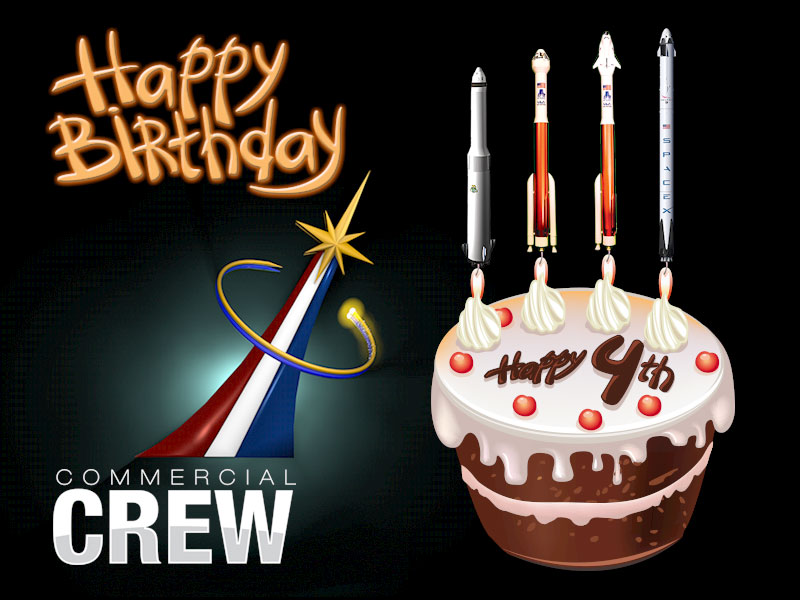 Space doesn’t carry sound, but you can see all sorts of colors up there! From the whites of the distant stars to the red glow from Mars, the universe is alive with a palette all its own. And that doesn’t include all the human-made spacecraft up there! What colors would you use on your spacecraft? Think about it a bit then take your artistic talents to this picture and show us what you came up with! Just print out the picture – your parents can help you – and apply some crayons, markers or colored pencils to provide your own hue of success. Then scan it or take a picture and send it to us by Twitter or Facebook post or in email to ksc-connect2ccp@mail.nasa.gov
Space doesn’t carry sound, but you can see all sorts of colors up there! From the whites of the distant stars to the red glow from Mars, the universe is alive with a palette all its own. And that doesn’t include all the human-made spacecraft up there! What colors would you use on your spacecraft? Think about it a bit then take your artistic talents to this picture and show us what you came up with! Just print out the picture – your parents can help you – and apply some crayons, markers or colored pencils to provide your own hue of success. Then scan it or take a picture and send it to us by Twitter or Facebook post or in email to ksc-connect2ccp@mail.nasa.gov
Category: Sierra Nevada Corporation
Happy Fourth Birthday to America’s Commercial Crew Program!
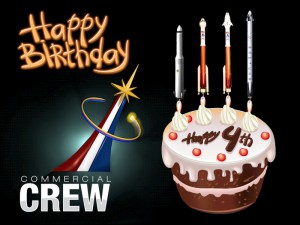 The Commercial Crew Program is four years old this week, and what a four years it has been — every year seems to bring accomplishments that outpace those of the year before! The program was formed to facilitate the development of U.S. commercial crew space transportation systems with the goal of achieving safe, reliable and cost-effective access to and from the International Space Station and low-Earth orbit.
The Commercial Crew Program is four years old this week, and what a four years it has been — every year seems to bring accomplishments that outpace those of the year before! The program was formed to facilitate the development of U.S. commercial crew space transportation systems with the goal of achieving safe, reliable and cost-effective access to and from the International Space Station and low-Earth orbit.
In the past year, we’ve expanded our focus beyond the development stages of spacecraft and launch vehicle systems to complete crew transportation systems. We are working closely with four industry partners — Blue Origin, Boeing, Sierra Nevada Corporation and SpaceX — with our sights firmly set on the horizon of a new dawn of spaceflight in the very near future. We’re moving into the flight testing and certification phase with Boeing and SpaceX, the two companies chosen to take astronauts from American launch sites to the International Space Station.
We have a lot of work to do, but the goal is within reach! So let’s light these candles — one for each partner — and get on with our innovations! (By the way, we light our candles on the bottom for liftoff!)
NASA and SNC Add Milestone to Partnership Agreement
NASA’s Commercial Crew Program continues to work closely with American aerospace companies as they develop new human transportation systems for low-Earth orbit. Recently, the program added another milestone to its Commercial Crew Integrated Capability (CCiCap) 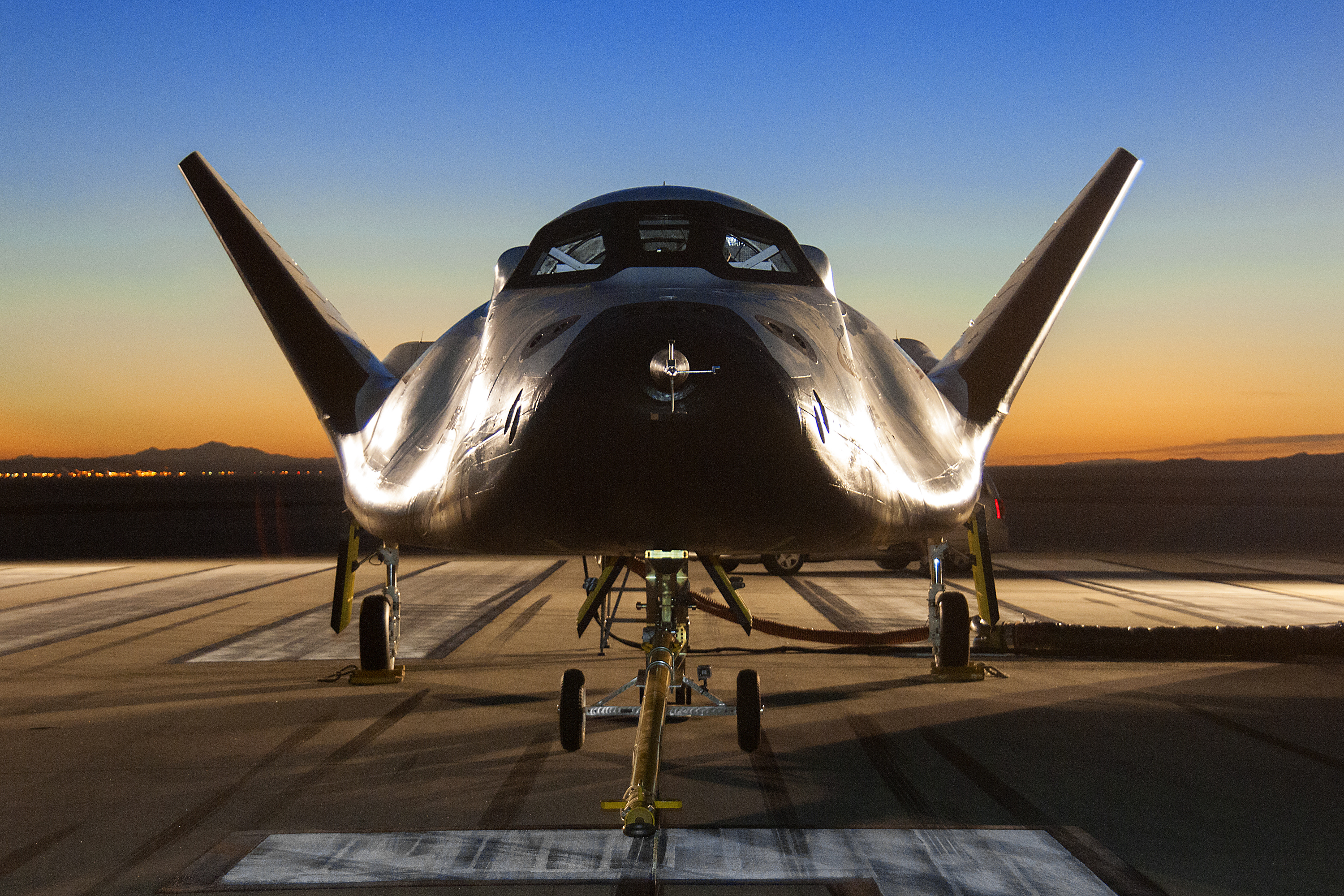 Space Act Agreement with Sierra Nevada Corporation (SNC). The company’s Design Analysis Cycle-6 Closeout Review will demonstrate the advancement of the Dream Chaser Space System from a Preliminary Design Review level of maturity toward a Critical Design Review level. While the new milestone is unfunded, NASA and SNC continue to benefit from each other’s technical expertise. The amendment also extends the partnership through March 2016.
Space Act Agreement with Sierra Nevada Corporation (SNC). The company’s Design Analysis Cycle-6 Closeout Review will demonstrate the advancement of the Dream Chaser Space System from a Preliminary Design Review level of maturity toward a Critical Design Review level. While the new milestone is unfunded, NASA and SNC continue to benefit from each other’s technical expertise. The amendment also extends the partnership through March 2016.
SNC is continuing to develop its Dream Chaser spacecraft, United Launch Alliance Atlas V rocket and associated ground and mission support systems. The company also is preparing for another CCiCap milestone – the second free-flight test of the Dream Chaser at NASA’s Armstrong Flight Research Center in Edwards, California, targeted for later this year.
Flight Tests, Component Evaluations Highlight 2015 Plans
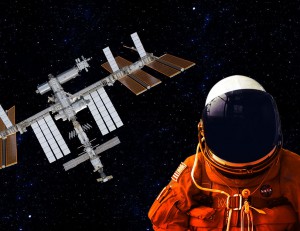 We’re looking forward to an exciting 2015 here at Commercial Crew. A sampling of our calendar: two abort tests, a free-flight test, and component evaluations. All of these are important steps as NASA and our partners progress toward launching space station crews again from American soil!
We’re looking forward to an exciting 2015 here at Commercial Crew. A sampling of our calendar: two abort tests, a free-flight test, and component evaluations. All of these are important steps as NASA and our partners progress toward launching space station crews again from American soil!
NASA Commercial Crew Partners Complete 23 Milestones in 2014, Look Ahead to 2015
 NASA’s Commercial Crew Program and the agency’s industry partners completed 23 agreement and contract milestones in 2014 and participated in thousands of hours of technical review sessions focused on creating a new generation of safe, reliable and cost-effective crew space transportation systems to low-Earth orbit destinations. Read more about this year’s milestones and achievements and what we have to look forward to in 2015 as we work to bring crewed launches back to the U.S. http://go.nasa.gov/1AQKBCY
NASA’s Commercial Crew Program and the agency’s industry partners completed 23 agreement and contract milestones in 2014 and participated in thousands of hours of technical review sessions focused on creating a new generation of safe, reliable and cost-effective crew space transportation systems to low-Earth orbit destinations. Read more about this year’s milestones and achievements and what we have to look forward to in 2015 as we work to bring crewed launches back to the U.S. http://go.nasa.gov/1AQKBCY
Getting to Space Isn’t Easy, But It’ll Be More Automated
Since the beginning of the space age, finding the balance of control between human and machine has been a careful pursuit. Thanks to advances in technology and software, Commercial Crew spacecraft will be will be more automated than any that have come before. Learn more: http://go.nasa.gov/1Cw7Weq
Hey Kids – Contribute to the 2015 Commercial Crew Calendar!
NASA’s Commercial Crew Program wants you to help draw out our future in space exploration! We’re going to put out a calendar for 2015 in a few weeks and it will be up to you to decide how it will look. The best thing is that it will be really easy, and you could see your work featured on the Commercial Crew Website! (*This contest is open to all children ages 4 to 16 regardless of NASA affiliation)
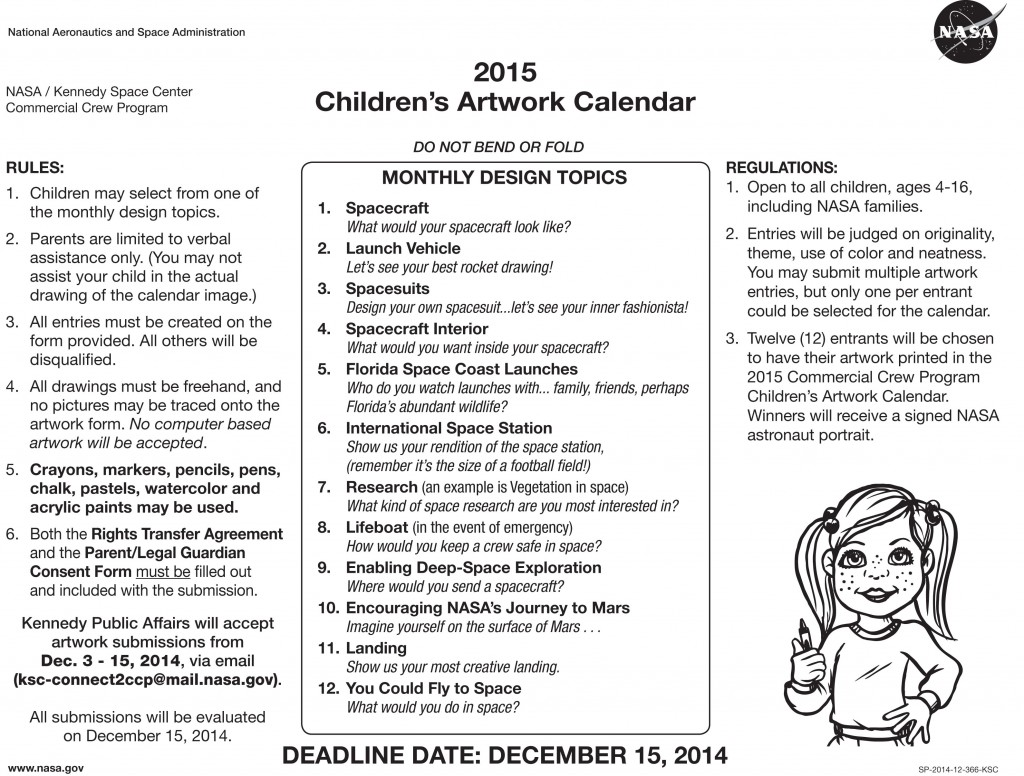
We have some rules for submitting your drawings, so you’ll have to print out a few forms then fill them out with your parent’s help, scan them to send them back to us via email at ksc-connect2ccp@mail.nasa.gov. We’re also including a template for you to draw on, which will help us lay out the calendar.
We’re looking for the best drawings in 12 categories, so get out your art tools and let your imagination fly through space with us! One last thing: the deadline for submissions is Dec. 15 at noon Eastern. Now the fun stuff, the categories . . .
1. Spacecraft: NASA’s spacecraft of the past had thousands of nobs and dials. Today’s commercial crew spacecraft will use touch screens, 3D printed seats and engines, and will be lightweight, but tough enough to withstand meteorites. What would your spacecraft look like?
2. Launch Vehicle: The commercial crew rockets that will carry astronauts to the International Space Station will be smaller than NASA’s previous Saturn V and space shuttle systems. Their missions are different, so their capabilities are different. Think of it like riding your bike to see your next-door neighbor, instead of driving a semi-truck on a cross-country trek. Let’s see your best rocket drawing!
3. Spacesuits: An astronaut’s spacesuit is like his or her own personal spacecraft. Commercial crew spacesuits will keep astronauts safe by providing breathable air and a cool temperature. They also will enable constant communication with people monitoring their health here on the ground. Design your own spacesuit . . . let’s see your inner fashionista!
4. Spacecraft Interior: Every spacecraft’s interior has been unique and advanced for its time. Apollo was very different from the space shuttle, and both are very different from the commercial crew systems that astronauts will use to fly to the International Space Station. Today’s spacecraft could feature tablet-like technology, 3D printed seats, Wi-Fi and much more. What would you want inside your spacecraft?
5. Florida Space Coast Launches: The rumble . . . the glow . . . the excitement! Every time NASA has launched people off the surface of Earth and into space, it has been from Florida’s Space Coast. In the next couple years, we will see commercial crew engines glow orange and plumes of smoke as astronauts again launch to the International Space Station from Florida. In the 2030s, we will also see astronauts launching from Florida’s Kennedy Space Center as they begin their journey to Mars. Who do you plan to watch launches with? Family, friends, perhaps Florida’s abundant wildlife?
6. International Space Station: Look up! The International Space Station is orbiting about 250 miles above the surface of Earth, 24 hours a day, seven days a week, 365 days a year. On board, astronauts conduct ground-breaking research that helps us here on Earth. They also are learning what it takes to live for long periods of time in space, which will help them on their journey to Mars. Commercial crew will help add an additional crew member to the station, essentially doubling the research potential of today. Show us your best rendition of the space station, remember it’s the size of a football field!
7. Research: Every day, astronauts perform research aboard the International Space Station, which is commercial crew’s ultimate destination. That research makes our lives better here on Earth, helps us understand more about our own planet and prepares us for longer missions to Mars. What kind of space research are you most interested in?
8. Lifeboat: Similar to lifeboats on a cruise ship, commercial crew spacecraft that will fly astronauts to the International Space Station are designed to safely and quickly evacuate the station’s crew in an emergency. How would you keep a crew safe in space?
9. Enabling Deep-Space Exploration: Commercial crew spacecraft will go to the International Space Station about 250 miles above Earth. But the solar system has hundreds of other interesting places, too! Future astronauts could use other spacecraft to explore asteroids that are close enough to Earth, or maybe even a comet. Where would you send a spacecraft
10. Encouraging NASA’s Journey to Mars: By encouraging private companies to provide human transportation services to and from low-Earth orbit – a region NASA’s been visiting since 1962 – America’s space agency will get the most research and experience out of the nation’s orbiting laboratory. Commercial crew allows NASA to expand its focus to build spacecraft and rockets for flights to Mars. Imagine yourself on the surface of Mars . . .
11. Landing: Spacecraft landings are quite impressive. After flying through space and re-entering the atmosphere at 17,500 miles per hour, spacecraft have to land smoothly to protect the astronauts and scientific research they carry. Commercial crew spacecraft designers are looking at options to land with parachutes and airbags, fly to a runway, similar to an airplane, or land using only rocket engines. Show us your most creative landing.
12. You Could Fly to Space: Remember when only astronauts could go to space? NASA won’t be the only customer for new commercial crew spacecraft. Companies will own and operate their crew transportation systems and be able to sell services to other customers . . . will you be one of them? What would you do in space?
And here’s all you need to get started: CCP-Planner-Artwork-Form_final
SNC Tests Dream Chaser Propulsion System
Sierra Nevada Corporation, one of NASA’s Commercial Crew Program partners through the agency’s Commercial Crew Integrated Capability (CCiCap) initiative, recently performed incremental tests of its reaction control system, which will help maneuver its Dream Chaser spacecraft in space. The company’s Milestone 15a built on SNC’s previous propulsion system development efforts by implementing a compact prototype thruster operating in a vacuum chamber to simulate an on-orbit environment.
NASA Commercial Crew Partners Continue System Advancements

NASA’s industry partners completed and added new development milestones under agreements with the agency’s Commercial Crew Program. The work performed by Blue Origin, Boeing, Sierra Nevada Corporation and SpaceX during partnership and contract initiatives are leading a new generation of safe, reliable and cost-effective crew space transportation systems to low-Earth orbit destinations. Learn more about what has been accomplished and what has been added here.
Commercial Crew’s Collector Card Family Expands!
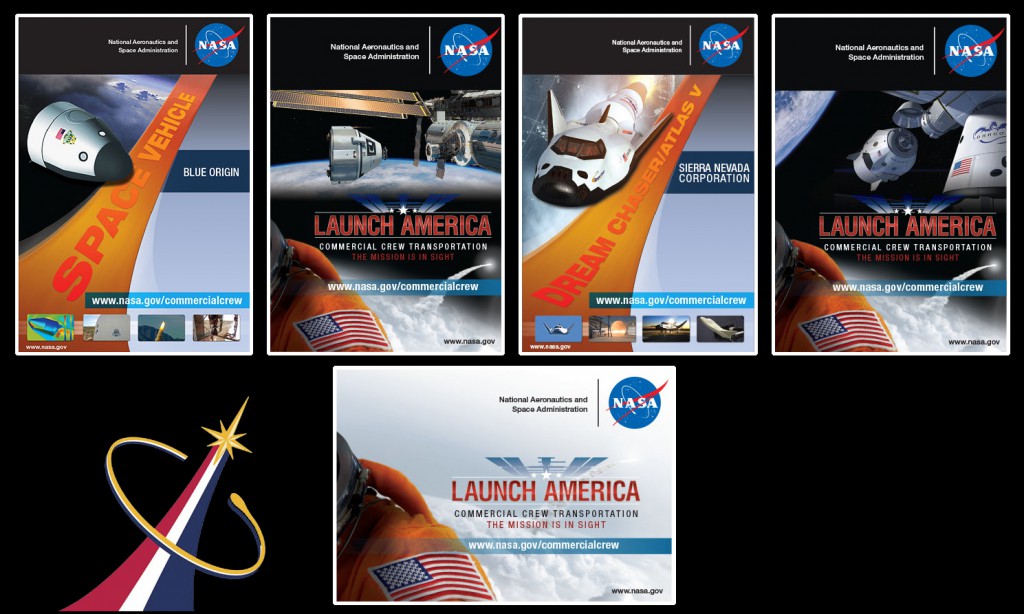 We’ve added two more collector cards to the Commercial Crew set! Blue Origin’s Space Vehicle and Sierra Nevada Corporation’s Dream Chaser join Boeing’s CST-100 and SpaceX’s Crew Dragon, along with the card for NASA’s Commercial Crew Program. All the companies are working in partnership with NASA to develop their respective spacecraft and are in different stages of agreements.
We’ve added two more collector cards to the Commercial Crew set! Blue Origin’s Space Vehicle and Sierra Nevada Corporation’s Dream Chaser join Boeing’s CST-100 and SpaceX’s Crew Dragon, along with the card for NASA’s Commercial Crew Program. All the companies are working in partnership with NASA to develop their respective spacecraft and are in different stages of agreements.
The goal is to build and fly a new generation of spacecraft capable of carrying people to low-Earth orbit and the International Space Station from America in the next three years. It’s a great challenge on many levels, but combining NASA’s know-how with the industrial prowess of American aerospace companies puts the opportunity to create a new business system within reach.
To download and print the cards, click on each of these links: Blue Origin Space Vehicle, Boeing CST-100, Commercial Crew Program, Sierra Nevada Corporation Dream Chaser and SpaceX Crew Dragon. For best results, use card stock and select auto-rotate and center and the two-sided option in your printer settings. If the two-sided option isn’t available, print page 1 and reload the paper before printing page 2.

